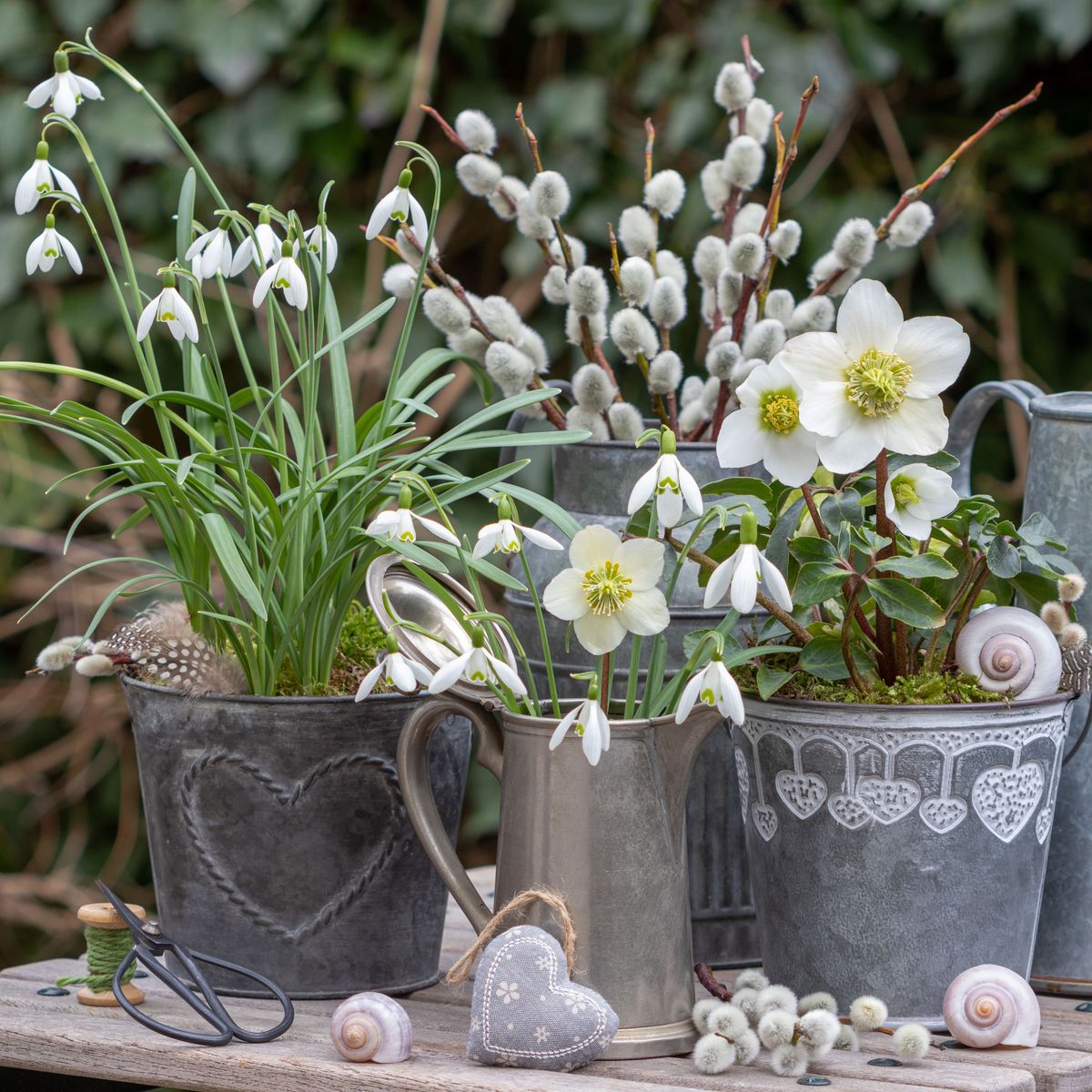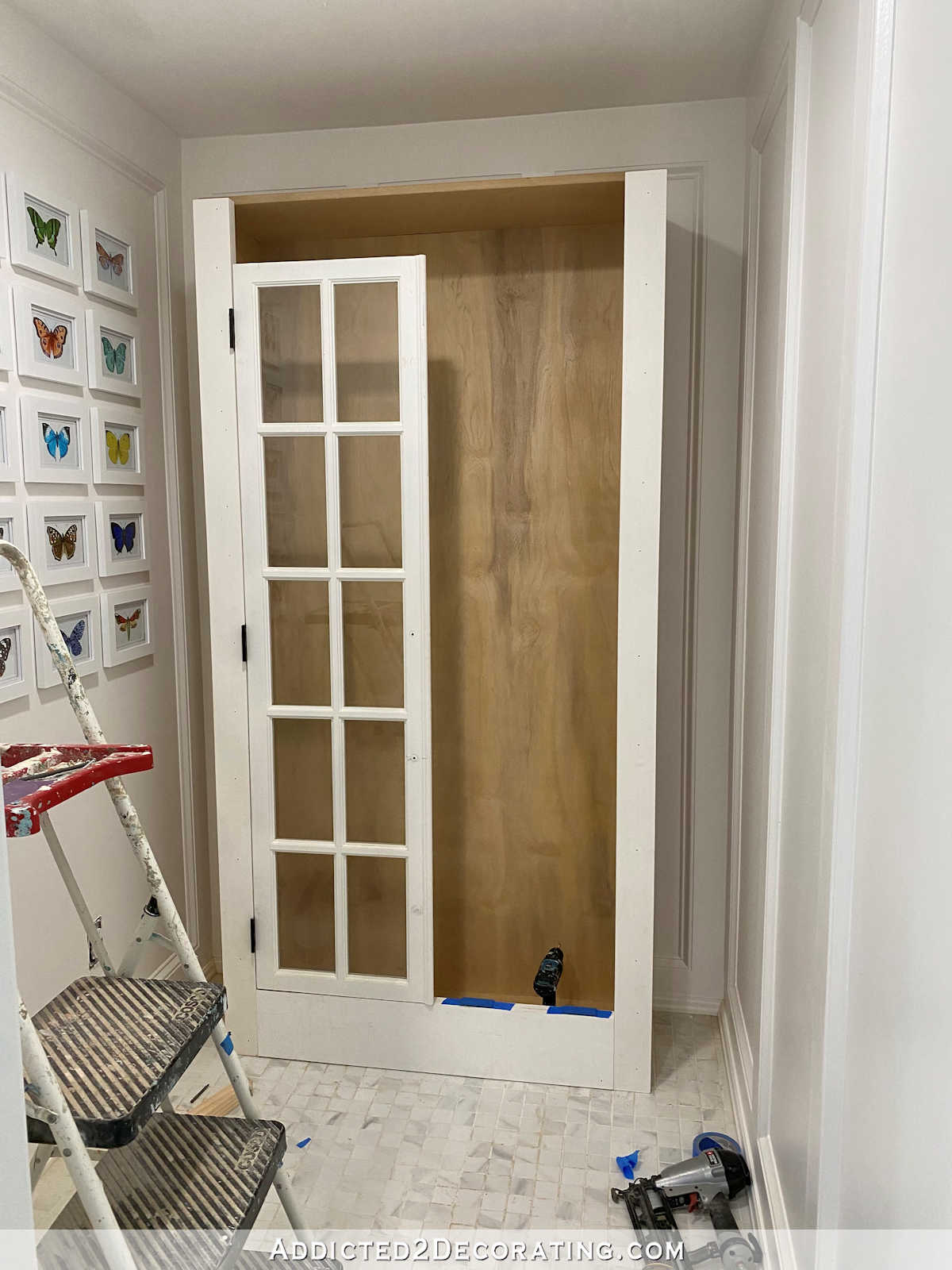The vining pink Syngonium is related to the Philodendron. While the Araceae family is best-known for its vining houseplants, people often picture the many philodendrons and forget how many other plants are in the family.
The cultivar Syngonium podophyllum ‘Pink’ (sin-GO-nee-um po-do-FIL-um) is a wonderful example.
Nonetheless, the plant’s parent species has a wide natural range throughout most of Central America, from Mexico to Bolivia.
‘Pink’ is often referred to as pink arrowhead plant or pink Syngonium podophyllum and has many cultivars.
However, the Syngonium plant is so popular that it’s naturalized in many areas where it has escaped gardens, leading to a popular misconception that it’s a variant (natural variation of a species) instead of a cultivar (human-cultivated variety).
As a result, it also shares the parent plant’s many nicknames, such as:
- African Evergreen Plant (although it’s not native to Africa)
- American Evergreen Plant
- Arrowhead Ivy
- Arrowhead Philodendron (because so many people think all aroids are philodendrons)
- Arrowhead Plant
- Arrowhead Vine
- Five Fingers
- Goosefoot
Pink Syngonium Care
Size and Growth
With the ability to grow 1’ foot per growing season, this fast grower doesn’t get all that big when grown indoors.
Given proper support, a mature plant will only be around 6’ feet tall and up to 2’ feet wide.
Of course, the true show-stopper is its arrowhead-shaped leaves, which can occasionally appear lobed.
The underside of Pink Syngonium is green, like the parent plant.
However, this cultivar has pink accents on the top, which can be almost iridescent in the proper lighting.
Flowering and Fragrance
As with most aroids, you’ll likely never see this plant bloom in captivity, and its inflorescence tends to be unremarkable even when it does.
Light and Temperature
Pink Syngonium can tolerate low light levels but will lose its coloration as a result.
Instead, keep it in bright, indirect, or filtered light.
This can involve keeping it beside a bright window where the rays won’t make direct contact.
You can also place it in an east or west window to get the gentler full sun in the morning or evening, but it is partially shaded the rest of the day.
Having it by a southern window with a sheer curtain will also work.
Just be sure not to expose it to the harsh afternoon sun, as this can easily scorch the leaves.
Another area where you have a lot of leeways is humidity.
You can grow a healthy pink Syngonium in 40% to 50% percent humidity.
However, it will thrive with levels up to 70% percent.
Consider keeping it in a bright kitchen or providing a humidifier or pebble tray for that little extra boost.
Aroids are tropical plants, and you can grow this particular cultivar outdoors in USDA hardiness zones 10a to 12.
Just be aware that it can be sensitive to sudden temperature changes and has been known to grow much larger than it does indoors, allowing it sometimes to escape gardens.
The plant prefers temperatures between 60° and 85° degrees Fahrenheit.
Anything above this can damage the plant, while lower temperatures stunt its growth.
If the temperature hits 50° degrees Fahrenheit or below, it could kill the plant.
Try to keep it away from sources of sudden drafts, such as air conditioners, vents, or frequently used doors.
Watering and Feeding
Pink Syngonium has a small amount of drought tolerance, so it won’t die if you miss a watering during vacation.
However, overwatering can be a huge problem.
To ensure your vine gets just the right amount of water every time, do the following:
- First, stick your finger into the soil. If it’s dry 1” inch down (approximately the first knuckle deep), it’s time to water.
- Use room temperature distilled water or natural rainwater and pour slowly and evenly onto the soil without getting the plant wet to avoid the risk of stem rot.
- Work your way slowly around the base of the plant until the soil surface can no longer absorb as fast as you’re pouring or you see moisture beginning to seep from the drainage holes.
A balanced liquid houseplant fertilizer diluted to half strength is perfect for this plant.
Feed one to two times per month during the spring and summer, basing the frequency on how your Syngonium reacts.
Make sure to follow any instructions on the package for the best results.
Some growers prefer to use slow-release fertilizers, but while this means less work for you, it also means less nutrition for the plant.
Unlike liquid fertilizers, a slow-release granule or capsule will degrade over time, but some nutrients degrade faster than others.
This results in the plant getting a burst of some nutrients while being deprived of others at any given time.
You can also use several homemade or organic supplements if the plant shows any deficiency.
These include:
- Eggshells (calcium)
- Epsom salts (magnesium)
- Used coffee grounds (nitrates)
- Manure teas
- Even used aquarium water
Soil and Transplanting
Let’s get the warning out of the way now:
Pink Syngonium likes acidic soils with a pH of 5.5 to 6.5.
However, most plants will begin to suffer if exposed to a pH below 6.1, so it’s generally best to keep the plant in a pH range of 6.1 to 6.5 (slightly acidic) so any nearby plants won’t be damaged.
That said, loamy, well-drained soil works best.
African violet mix with some added perlite is a perfect choice and one you’ll likely use for a large percentage of your houseplants.
Peat moss can be another great additive to increase the organic content, but avoid using sphagnum moss, as it will make the soil more neutral instead of adding acidity as peat does.
A good soil-free mix such as those commonly used for philodendrons can also work wonders.
These mixes include coconut coir and orchid bark for the base, with peat moss, activated charcoal, perlite, and worm castings added to provide additional nutrients and help filter out harmful substances.
Due to its fast growth rate, you’ll need to repot your pink Syngonium annually.
This can alleviate any root-binging (evident if you see roots poling out of the soil surface or drainage holes) by allowing you to graduate the plant to one container size larger.
More importantly, it lets you replace the potting medium with fresh material, ensuring the plant gets enough nutrients while removing any contamination from mineral waste left behind by fertilizer, water, or waste chemicals.
Grooming And Maintenance
Pink Syngonium is a fast grower, meaning you’ll need to prune it annually in the spring.
Not only does this encourage new growth, but it can also allow the plant to be shaped and lead to a fuller appearance.
Simply remove any leggy growth, along with damaged or diseased leaves.
How To Propagate Goosefoot?
It’s very rare to see this plant bloom, so it’s rare to grow one from seed.
The good news is that you can easily propagate through stem cuttings in both soil and water.
Pink Syngonium podophyllum Pests Or Diseases
This vine has some mild drought tolerance, allowing it to miss a watering here and there.
As with most aroids, it’s fairly resistant to pests and disease but may still become infested by mealybugs or spider mites.
Similarly, the most common disease risks are bacterial blight, root rot, and stem rot – all of which can be caused by improper watering habits.
Another common aroid trait this plant shares is the high calcium oxalate content, which can be toxic to varying degrees in both humans and pets.
Syngonium Podophyllum ‘Pink’ Uses
This is another great choice for hanging baskets.
Given proper support in a spot with adequate sunlight, pink Syngonium can add color to any room.
Its tolerance to neglect also makes it a perfect beginner’s plant.
Finally, it’s a clean air plant, meaning it draws toxic substances from the air, such as benzene, formaldehyde, and xylene, which it then converts into food.












